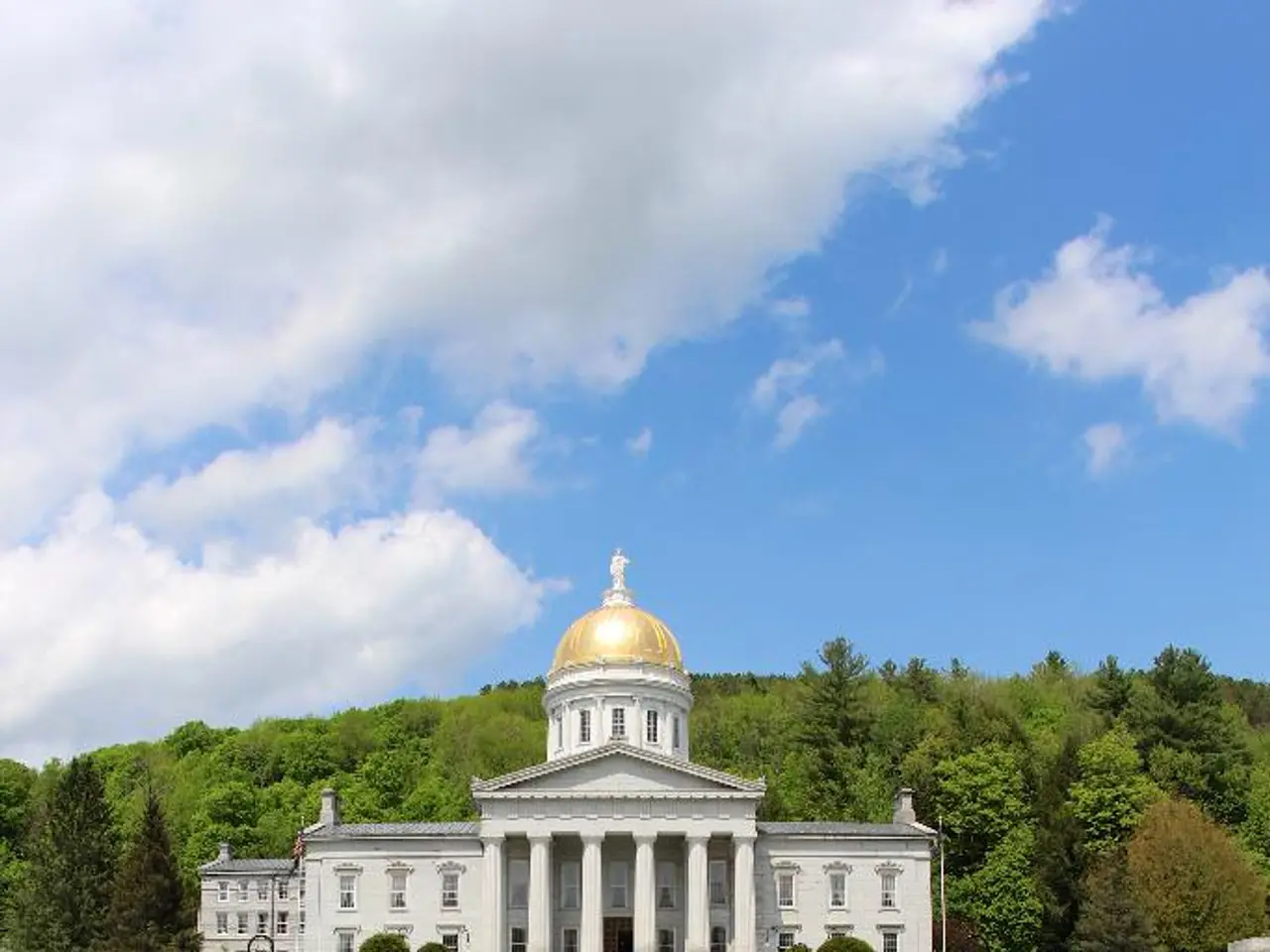Power-Infused Domicile: Design, Legends, and the Construction of the Presidential Residence (White House)
A Journey Through Time: The Evolution of the White House
The White House, a symbol of American identity, power, and memory, has undergone significant transformations since its construction between 1792 and 1800. Originally designed by James Hoban, the presidential residence was built with Aquia Creek sandstone painted white, symbolizing the new nation's aspirations and architectural identity rooted in neoclassical style[1].
In the early 19th century, Thomas Jefferson introduced neoclassical elements aligned with democratic ideals, while Pierre Charles L'Enfant's plan for the new capital city included the "President's House." The White House mirrors the contradictions of the country it houses, a republic founded in hierarchy, a republic haunted by its imperial temptations, a nation always becoming[2].
The building's architecture and expansions reflect evolving American identity, power, and memory through successive presidents’ modifications. The 1850s saw the addition of the north and south porticos, enhancing the White House's sense of formality and permanence. Theodore Roosevelt oversaw the creation of the West Wing in 1902, relocating the president's offices from the residence proper, marking a decisive shift: the architectural separation of private life from public duty[1].
The West Wing further evolved under President Taft, adding the Oval Office, a now-iconic symbol of executive power. Franklin Roosevelt relocated the Oval Office adjacent to the Rose Garden, enhancing the connection between governance and natural symbolism[1]. The Rose Garden itself, established in the early 20th century by Edith Roosevelt as a formal colonial-style garden, has been periodically refreshed to symbolize presidential legacies and public memory, most recently modernized during the Trump administration with attention to accessibility and aesthetic nods to past designs[3].
The White House's architectural evolution parallels the growth of American political power and democratic symbolism. Its neoclassical style connects the U.S. to ancient democratic ideals, while expansions reflect administrative growth and the increasing complexity of the presidency. The building embodies national memory, hosting ceremonial functions, public events, and now new large-scale spaces such as the planned White House Ballroom—announced in 2025—which will reinforce the White House's role in American social and political life while respecting its architectural heritage[2][4].
Between 1948 and 1952, under Harry Truman, the interior of the White House was entirely gutted and rebuilt using steel-reinforced concrete. Only the original outer walls remained after Truman's reconstruction. The demands of governance in an industrial, global age led to further adaptations of the White House by Woodrow Wilson, Franklin Roosevelt, and subsequent occupants. Truman's reconstruction preserved architectural fragments and emphasized fidelity to the original design[1].
The White House, like the nation itself, emerged from the upheaval both altered and affirmed after being burned during the War of 1812 by British troops. The restoration of the White House after the fire remained largely faithful to the original design. The rebuilt White House today is a palimpsest: a surface continually rewritten, yet never fully erased[2].
In summary, the White House's architectural history—from its original construction to modern expansions and renovations—mirrors the evolution of American identity, power structures, and collective memory. It embodies democratic ideals, adapts functionally for governance, and represents symbolically as the nation’s executive heart.
[1] - National Park Service. (n.d.). White House History. Retrieved February 25, 2023, from https://www.nps.gov/whho/learn/historyculture/index.htm [2] - White, E. (2018). The White House: The History of an American Idea. W. W. Norton & Company. [3] - White House Historical Association. (n.d.). The White House Rose Garden. Retrieved February 25, 2023, from https://www.whitehousehistory.org/articles/white-house-rose-garden [4] - The White House. (2021, October 27). The White House Ballroom. Retrieved February 25, 2023, from https://www.whitehouse.gov/briefing-room/statements-releases/2021/10/27/the-white-house-ballroom/
Politics and general-news have profoundly influenced the architectural evolution of the White House. The additions and renovations, like the Oval Office under President Taft and the White House Ballroom announced in 2025, often mirror societal changes and political priorities, reflecting the nation's ongoing development.








